There are three primary roles in SCRUM.
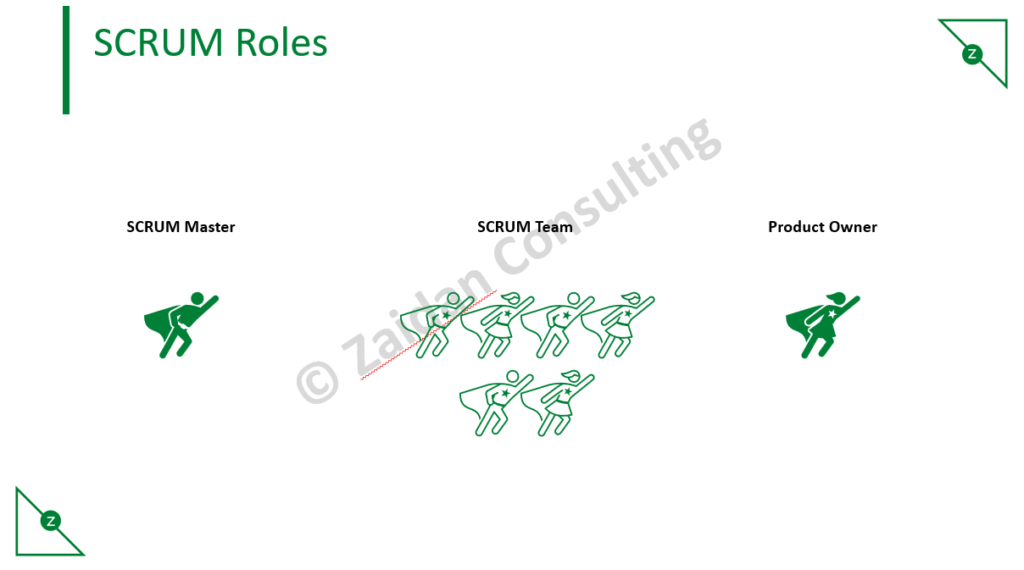
SCRUM Master can be compared with Project Manager in a regular sense. Except that his approach is not Top Down in terms of authority. He is rather a facilitator and a helping hand for the team. The SCRUM team comprises Developers and QA and any other members who are actually getting the work DONE. It can include members from UX, document writers, etc. The Product Owner is the direct source of product requirements for the team. Now let us go through each role in detail.
Video: Roles in SCRUM
SCRUM Master
SCRUM Master can be compared with Project Manager in a regular sense. Except that his approach is not Top Down in terms of authority. He is rather a facilitator and a helping hand for the team.
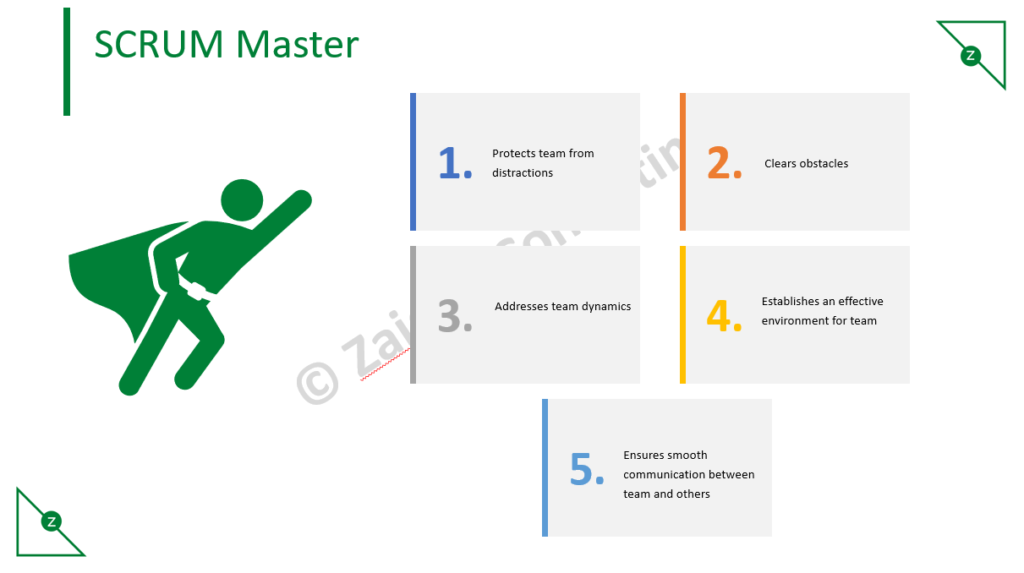
The SCRUM master makes sure that whatever the team has committed for the Sprint, they achieve it. He shields the team from external influences. He removes any impediments which are beyond the control of the team. Example Dependencies on another team, Network issues, IT issues, etc. As the team runs at a fast pace there is a lot of room for conflict. A SCRUM master should be resolving conflicts both at the team level and individual level.
Whether it may b infrastructure or Team Dynamics or communication plan or a process, the team must have an environment whether are highly efficient and productive. And a SCRUM master must provide that. He acts as an interface and moderator in communication between the team and any other stakeholder. Whether it is discussing with the IT team on the firewall or Demonstrating Sprint work to Business users etc.
SCRUM Team
As discussed many times before a SCRUM team has to be self-organized. They make decisions together. NOW. There is a lot of confusion in the real world on what a cross-functional team means. But as long as a team has all the skills necessary to burn the backlog, then they are cross-functional. NOW there are arguments on Developers being able to QA and QA being able to Develop for a team to be cross-functional. But with test automation getting prominent and the advent of DevOps, this line gets thinner, doesn’t it?
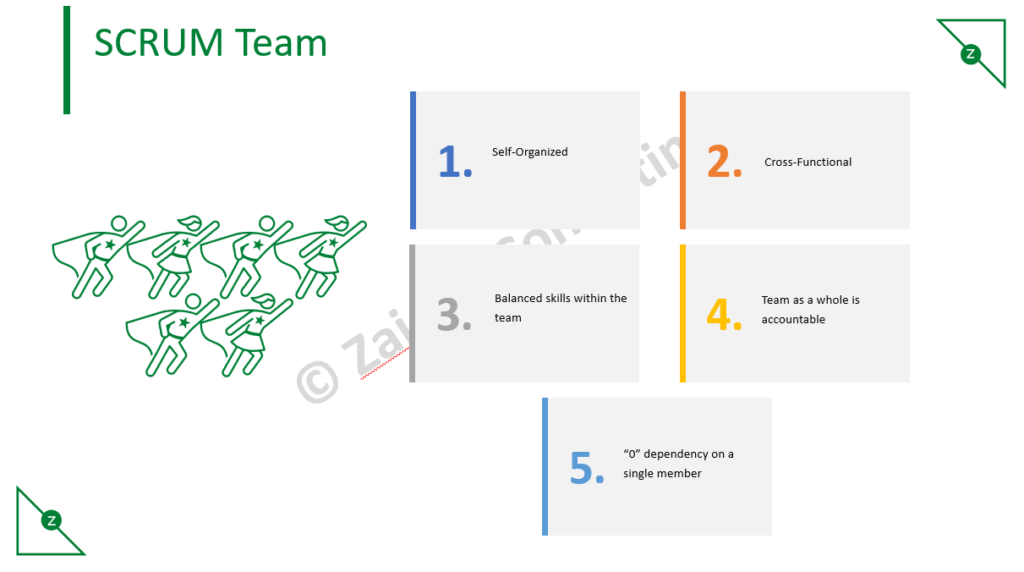
I have covered this as a part of the previous point. The team should have all the necessary skills to burn the backlog. It’s important that everyone has a mindset that the entire team is accountable for success or failure. This would mean that if a member is lagging behind in commitment for the Sprint, the others should voluntarily give a helping hand to pull him out of his delay. Being cross-functional is one thing and depending on a member for a particular skill set is another. There should not be any dependency on a single member for a skillset.
Product Owner
Product Management typically gives abstract information like “Vision” and “Roadmap”. It is a Product Owner who interprets and translates the requirements into Sprint-level details. A Product Owner acts as an interface between the team and business or end-users in translating the requirements.
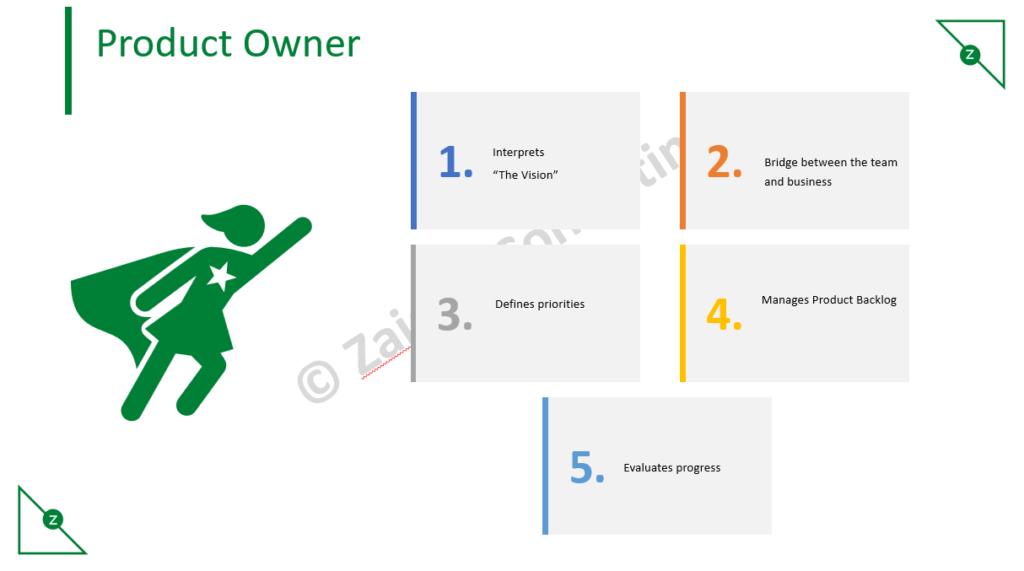
He is responsible for prioritizing the requirements in the backlog. TOP items in priority would need immediate attention from the team. He also helps the team in triaging open defects in the product. In essence, he is the owner of the product backlog. The Product Owner reports to Product Management on the status of development and functionality achieved or shipped. In summary, he has the final authority on whether the team’s work meets the requirements.
Other Roles
We covered three primary roles so far in SCRUM. But there are hundreds of other roles. Let us quickly go through a couple of them now.

A Product Manager is typically the person whom a Product Owner reports to. While a PO deals with smaller chunks of requirements called “User Stories”, a Product Manager typically deals with the superset of “User Stories” called “Features”. We will talk more in detail about Features and Stories later in this course. A SCRUM team typically deals with a single feature at a time. There may be other SCRUM teams working on other features in parallel towards the same release.
Who will be the person who monitors all the features together from a release perspective? This person is typically the one to whom all the SCRUM masters report. He is known as Program Manager or Release Manager and in some frameworks like sAFE they are referred to as “Release Train Engineers” or RTE
Architects drive the technical part of the team’s work. They define the design guidelines, review design changes, perform architectural governance. Though they are not part of all the Sprint ceremonies, they are typically involved in the beginning and end part of a release. Other stakeholders are anyone who is getting impacted by the work done by the SCRUM team. Typical examples are senior management, Senior members from the business, tech support team for transition, etc.
Ideal SCRUM Team Size
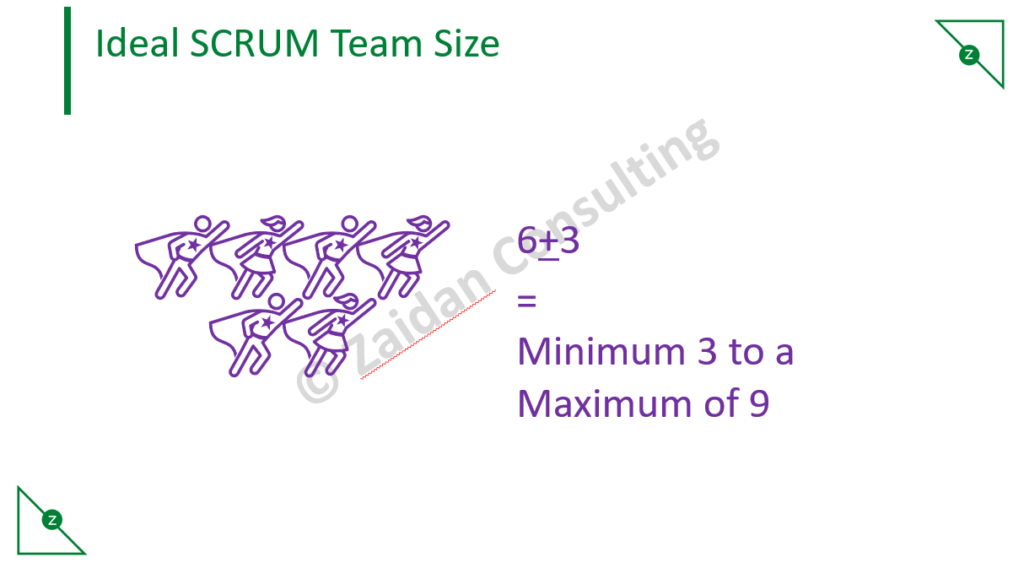
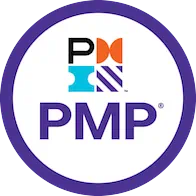
Our PMI® PMP®-Prep Course
If interested in this course, click here
- Case study based training
- LIVE instruction 36 Hours
- Post course guidance
- Exercise per topic
- 4 Mock exams for practice
- WhatsApp group support
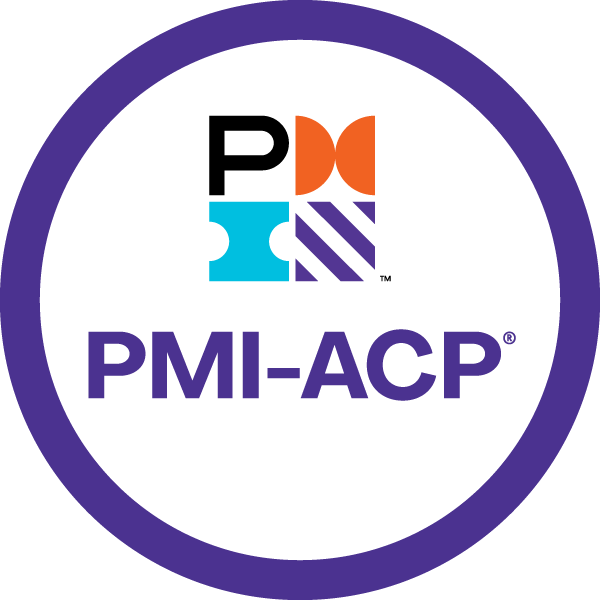
Our PMI® ACP®-Prep Course
If interested in this course, click here
- WhatsApp group support
- 4 Mock exams for practice
- Exercise per topic
- LIVE instruction 20 Hours
- Post course guidance
- Case study based training

JD (Coach/Instructor/Writer)
JD (a.k.a Janakiram) is a Project Management Coach, Trainer Author and Practitioner @Zaidan Consulting. He comes with around 17+ Years of experience primarily from the Software Industry. He is certified on PMI® PMP®, ACP®, Scrum Alliance CSM and Microsoft Certified Solution Developer on C#.NET. He has also authored the book “Practical Agile for Beginners”

About Zaidan Consulting
Zaidan Consulting are specialists in Project and Program Management space. Our training offerings include:
- Project Management Training
- Agile Training
- PMI®-ACP® Prep Training
- PMI®-PMP® Prep Training
- PMI®-CAPM® Prep Training
- ScrumStudy™ Authorized Training Partner (A.T.P)
Or you can contact us @+(91) 7672011471
Or Email us: contact@zaidanconsulting.com
